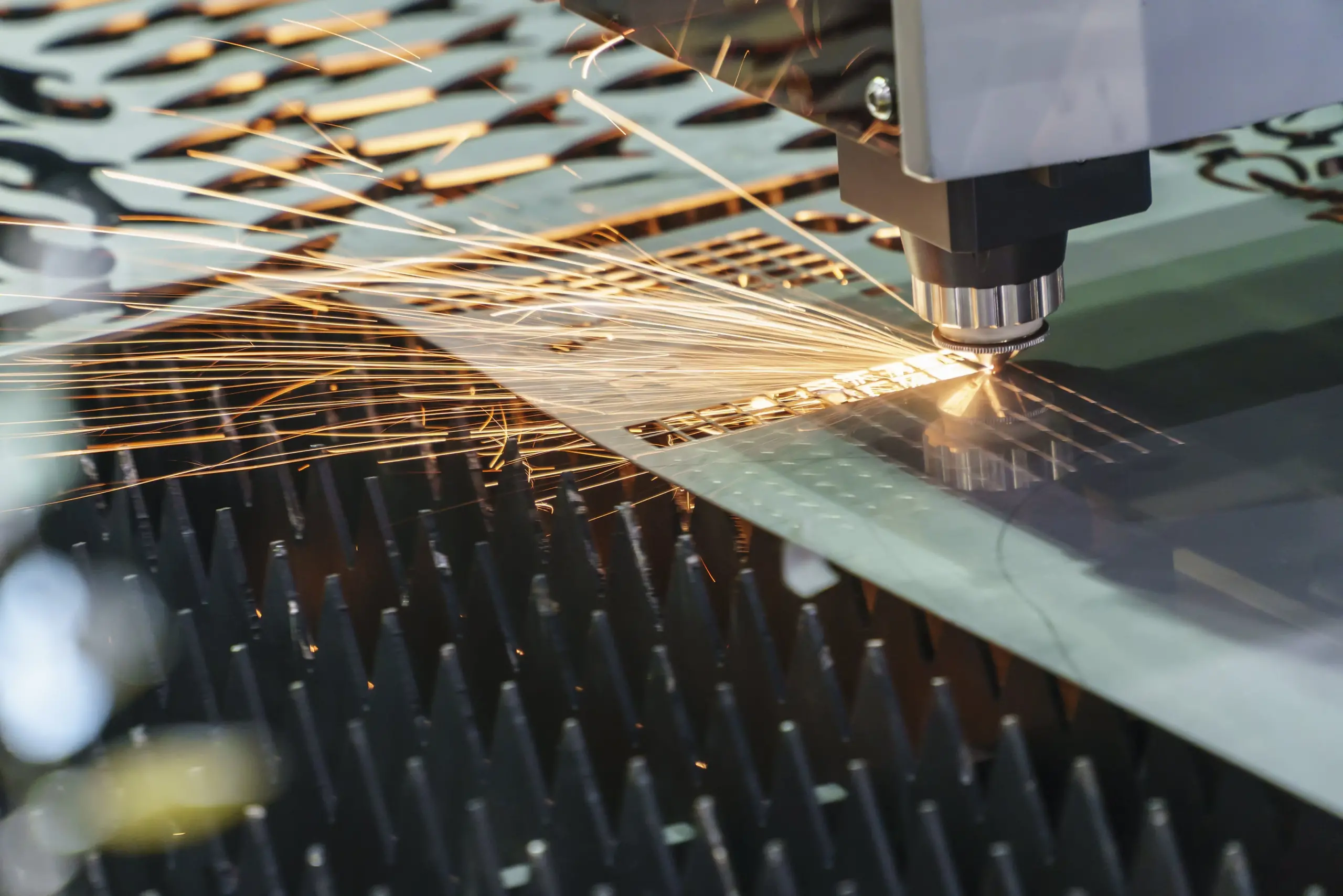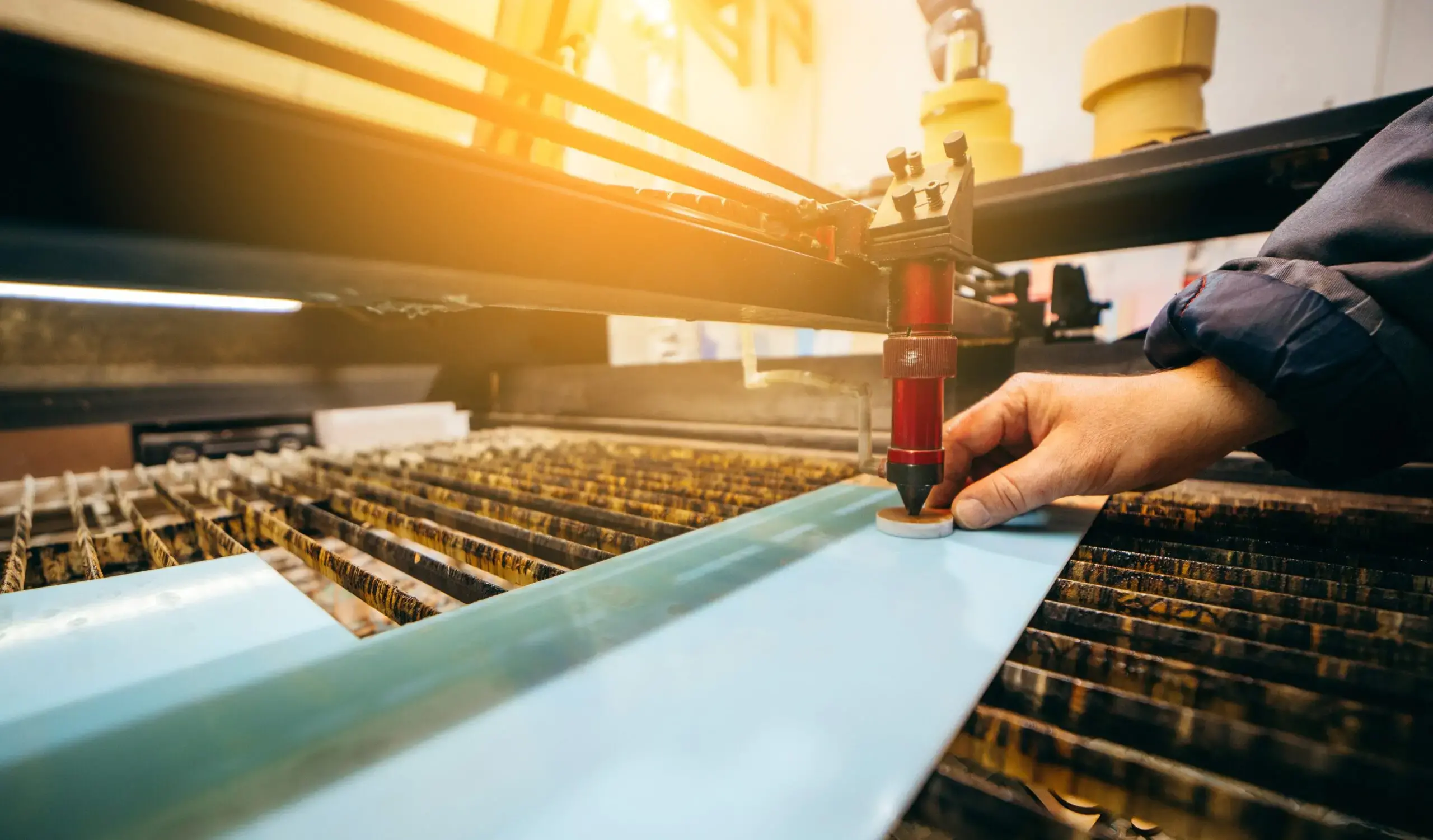In the world of laser cutting technologies, two prominent players have emerged: fiber lasers and CO2 lasers. These cutting-edge technologies have revolutionized the metal fabrication industry, providing faster, more efficient, and precise cutting capabilities. Fiber lasers, relatively new on the scene, have quickly gained popularity, challenging the long-standing dominance of CO2 lasers. But what sets these two technologies apart and which one is better suited for your specific cutting needs?
Understanding Fiber Laser Cutting
Fiber laser cutting, also known as solid-state laser technology, has emerged as a game-changer in the metalworking industry. Unlike CO2 lasers, which have been around for decades, fiber lasers made their debut only about 15 years ago. However, in a relatively short span of time, fiber lasers have rapidly gained traction and surpassed their CO2 counterparts in many aspects.
A fiber laser cutter harnesses the power of an intensely amplified beam, delivering it to the cutting head of the laser machine. The beam is readily absorbed by the material being cut, eliminating the need for reflection. The light source is transmitted through a fiber optic cable, which simplifies the construction of the laser machine and reduces costs. Fiber lasers excel in cutting metals up to one inch thick, with optimal performance observed in materials half an inch thick or less. For stainless steel, aluminum, brass, and copper, fiber laser cutters have established themselves as the fastest and most economical option.
One of the key advantages of fiber lasers is their ability to achieve high cutting speeds. With nitrogen or oxygen as assist gasses, fiber lasers can rapidly vaporize the material, resulting in faster processing times. Additionally, fiber lasers consume less power compared to CO2 lasers, making them more energy-efficient and cost-effective. The simplified design of fiber lasers, with fewer moving parts and sealed components, translates to lower maintenance requirements and reduced operating costs. These advantages make fiber lasers highly attractive for industrial applications where productivity and profitability are paramount.
The Power of CO2 Laser Cutting
CO2 lasers, on the other hand, have a longer history and have been used in various industries for several decades. These lasers operate by passing electricity through a gas-filled tube with mirrors at both ends. One mirror is fully reflective, while the other allows some light to pass through. These mirrors guide the laser beam into the material being cut. CO2 lasers are versatile and can cut through a wide range of materials, including steel, metal alloys, plastics, tiles, marble, and stone, making them suitable for diverse applications.
CO2 lasers offer several advantages, including their flexibility in cutting non-metal materials and their ability to achieve excellent finishes on thicker materials. The reliability of CO2 lasers, coupled with their long-standing presence in the industry, makes them a trusted choice for many manufacturers and fabricators.
However, CO2 lasers consume more power and require additional components. The complex cooling systems required for CO2 lasers also contribute to higher operating and maintenance costs. All these factors should be carefully considered when evaluating the suitability of CO2 lasers for specific cutting applications.
Pros and Cons of Fiber Laser Cutting
Advantages of Fiber Laser Cutting
- Lower Energy Consumption: Fiber lasers are significantly more energy-efficient than CO2 lasers, consuming up to 50% less electricity. This reduced energy consumption translates into cost savings and environmental benefits.
- Lower Operating and Maintenance Costs: Fiber lasers have a simpler design with fewer moving parts and sealed components, resulting in lower maintenance requirements and reduced operating costs. They do not require complex cooling systems or regular cleaning and replacement of mirrors, making them more cost-effective in the long run.
- Higher Energy Efficiency: Fiber lasers convert electrical energy into light more efficiently than CO2 lasers, achieving power conversion rates of 30-50% compared to the 10-15% of CO2 lasers. This higher energy efficiency results in reduced electrical expenses.
- Faster Cutting Speeds: Fiber lasers can cut materials up to five times faster than conventional CO2 lasers, significantly improving productivity and throughput. This advantage is particularly pronounced in thin materials, where fiber lasers outperform CO2 lasers in terms of cutting speed.
Disadvantages of Fiber Laser Cutting
- Limitations in Thicker Materials: While fiber lasers excel in cutting thin materials, their performance may be limited in thicker materials. CO2 lasers are still preferred for achieving superior finishes in thicker materials, especially stainless steel and aluminum.
- Limited Flexibility in Non-Metal Applications: Although fiber lasers have made significant advancements in cutting non-metal materials like copper and brass, CO2 lasers still offer greater flexibility in non-metal applications. Fabricators working extensively with non-metal materials may find CO2 lasers more suitable for their needs.
Pros and Cons of CO2 Laser Cutting
Advantages of CO2 Laser Cutting
- Flexibility in Cutting Non-Metal Materials: CO2 lasers have the advantage of cutting a wide range of materials, including non-metals. They offer greater versatility for applications that involve materials beyond metals, such as plastics, tiles, marble, and stone.
- Superior Finishes in Thicker Materials: CO2 lasers are known for achieving excellent edge quality and surface finishes in materials thicker than 5mm, particularly stainless steel and aluminum. They are preferred for applications where aesthetic appeal is crucial.
- Reliability and Familiarity: CO2 lasers have been in use for several decades, and many fabricators are familiar with their functions and capabilities. The long-standing presence of CO2 lasers in the industry adds a level of trust and reliability for manufacturers.
Disadvantages of CO2 Laser Cutting
- Higher Operating and Maintenance Costs: CO2 lasers require additional components, such as vacuum pumps, turbines, resonator gases, and mirrors, which increase operating and maintenance costs. Regular cleaning and replacement of mirrors, along with the need for complex cooling systems, contribute to higher expenses.
- Lower Energy Efficiency: CO2 lasers have lower energy conversion rates compared to fiber lasers, resulting in higher electricity consumption and costs. The lower energy efficiency of CO2 lasers is a factor that should be considered when evaluating their suitability for specific cutting applications.
- Slower Cutting Speeds in Thin Materials: CO2 lasers are outperformed by fiber lasers in terms of cutting speed, especially in thin materials. Fabricators working extensively with thin materials may find fiber lasers more efficient and productive.
Making the Right Choice
In the battle of fiber lasers vs. CO2 lasers, there is no definitive right answer. Both technologies offer unique advantages and have their place in the metal fabrication industry. The choice between fiber lasers and CO2 lasers ultimately depends on your specific cutting needs, material types, thicknesses, and desired finishes.
When considering a laser cutting system, it is essential to evaluate your operational capabilities, performance requirements, and budget constraints. Consulting with laser technology experts, such as Boss Laser, can help you navigate the decision-making process and select the laser cutting technology that best aligns with your specific needs and goals.
Remember, the world of laser cutting is constantly evolving, with advancements and innovations shaping the industry. By staying informed and embracing cutting-edge technologies like fiber lasers and CO2 lasers, you can elevate your metal fabrication capabilities and stay ahead of the competition.

Choose Boss Laser, Choose Excellence
At Boss Laser, we embody a culture of innovation, excellence, and customer-focused values. Our cutting-edge technologies, combined with our expertise and commitment to customer satisfaction, ensure that you have the tools and support you need to achieve excellence in your metal fabrication endeavors. As a manufacturer and seller of fiber and CO2 lasers, we are committed to leading the category with products and services that elevate the standards of precision, reliability, and user experience in laser technology.
Choose Boss Laser, and together, we will shape the future of laser cutting.
